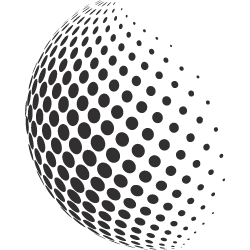Between reality and illusion If you want to know what trading really means—beyond luxury cars, piles of cash, and...
Money management
Money management
Introduction
Money management is a crucial aspect of trading that determines how to manage risk and use capital effectively. The goal of money management is to minimize risk while maximizing the potential for reasonable returns. Good money management helps traders maintain and grow their trading capital over time by setting rules for trade size, loss limits, and profit targets. It protects traders from incurring excessive losses due to emotional decisions or adverse market conditions.
The demo account
In the world of trading, the use of demo accounts is often promoted as a risk-free training method for new traders. These accounts simulate real trading environments using virtual money, meaning there is no real financial loss. Successful trading with a demo account is often based on the misunderstood assumption that success in a demo account is directly transferable to real trading situations. In reality, traders in demo accounts can gain a false sense of security because emotional aspects such as fear and greed, which are present in real trading scenarios, are absent in demo account trading. This can lead to excessive risk and ill-prepared decisions in real trading. Nevertheless, demo accounts are useful for trying out strategies.
Psychology and the right position size
Psychology plays a crucial role in trading, as emotional decisions can often lead to suboptimal trading results. Choosing the right position size is an essential part of risk management that helps avoid emotional mistakes. It involves determining the amount a trader is willing to risk on a single trade. This should be a small percentage of total capital, typically between 1% and 2%, to minimize risk and protect trading capital in the long term.
Trading is about 30% craft and 70% psychology. The craft can be learned with courses like this one. Aligning psychology with trading is a bigger effort. Coaching is particularly useful here, where a trader receives 1:1 mentoring and the individual trades are discussed. In this context, I also recommend keeping a trading diary. These are now also available electronically and are filled with the emotions that are present with each trade.
The psyche is the biggest obstacle to long-term success. There are a few ways to remove the psyche from trading as much as possible:
1. Set SL and TP before trading and do not change them
2. Fixed time limits, if you decide to keep the trade open for only one hour, for example, then stick to that hour
3. Automatic trading systems (bots), I will go into more detail later
Determine position size correctly
Properly determining position size is crucial for effective risk management in trading. To correctly determine position size, traders should determine the percentage of their total capital they are willing to risk on a single trade. This amount, often between 1% and 2% of trading capital, is then used to calculate the size of the trading position based on the stop loss distance. This means adjusting the position size so that the potential loss when the stop loss is reached is equal to this set risk amount. This ensures that losses are controlled and capital is protected across multiple trades.
Example: Let's say you have a trading account with a balance of 10,000 euros. You decide that you are willing to risk a maximum of 1% of your capital per trade. This means your risk per trade is 100 euros.
Let's say you want to buy a stock that is currently trading at 50 euros. You set your stop loss at 48 euros, which is 2 euros below your purchase price. The calculation of your position size then looks like this:
Risk per trade / stop loss distance = position size 100 euros / 2 euros = 50 shares
So you should buy 50 shares of this stock to ensure that your loss is not more than 100 euros if the stop loss is triggered.
The CRV
CRV (Risk-Reward Ratio) is an important concept in trading that is used to evaluate the potential risk of a trade in relation to its potential reward. CRV is calculated by dividing the expected profit by the potential loss. For example, a CRV of 2:1 means that for every potential loss of 1 euro, a profit of 2 euros is expected. This helps traders make informed decisions and ensure that trades have a favorable risk-reward ratio.
Example of a 2:1 CRV:

If I were to place a short trade here now and set the stop loss at 17307 points and speculate that the price would fall to 17005 points, the CRV would be almost 2:1. In other words, I would have the chance to win twice my risk.
The hit rate
The hit rate in trading measures the number of successful trades in relation to the total number of trades executed. It is often expressed as a percentage and is an important indicator of the effectiveness of a trading strategy. A high hit rate means that a large proportion of the trades were profitable. However, the hit rate should always be considered in combination with other metrics such as the risk-reward ratio (CRV) and the average profit or loss per trade to get a complete picture of trading performance.
The hit rate and the CRV are the only parameters that determine the success of a trader.
Example calculations for hit rate and CRV
- Hit rate :
- Suppose you made a total of 100 trades and 60 of them were successful.
- The hit rate is calculated as follows:
Hit rate = number of successful trades / total number of trades × 100
Hit rate = 60 / 100 × 100 = 60%
- Risk-reward ratio (CRV) :
- The average profit of successful trades is assumed to be 200 euros.
- The average loss of unsuccessful trades is 100 euros.
- The CRV is calculated as follows:
CRV = Average profit per winning trade / Average loss per losing trade
CRV = 200 / 100 = 2.0
- Expected value (profit per trade) :
- The expected value is the average expected profit or loss per trade and is calculated as follows:
Expected value = (successful trades × average profit) − (unsuccessful trades × average loss) / total trades
Expected value = (60 × 200) − (40 × 100) / 100 = 8000
These values give you insight into how effective your trading strategy is. A hit rate of 60% with a CRV of 2.0 shows that your strategy is potentially profitable as long as the CRV is consistently above 1 and the hit rate remains stable.
Why trading is boring
The phrase that trading is boring may sound surprising at first, especially in a world often dominated by the excitement of quick profits and dynamic market movements. However, behind this statement lies a deeper truth about the discipline and mental demands of successful trading.
Rationality over emotion
Trading should not be driven by emotions. Successful traders follow a set plan and strict rules rather than reacting to "gut feelings" or getting carried away by the excitement of the moment. A methodical and systematic approach reduces the risk of impulsive decisions that can put capital at risk.
Consistency is key
Boring trading often means following a proven system that is repeatable and reliable. This excludes constantly searching for new strategies or frequently changing your approach, which often brings more stress and uncertainty than it provides in value. Consistency in applying your strategy is crucial to being profitable in the long term.
Avoiding overtrading
When trading gets exciting, there is often a danger of overtrading, which involves taking too many or too risky positions. Boring trading means only trading when there are really good opportunities according to your analysis and strategy. This helps to manage risk and prioritize capital preservation.
Psychological stability
Emotionally charged trading can be psychologically stressful and lead to exhaustion. A steady, boring trading approach helps to maintain mental stability, which in turn leads to better decision-making.
Summary
Ultimately, the idea that trading has to be boring is a reminder that successful trading has more to do with discipline and consistency than excitement seeking. The best traders are often those who manage their emotions and execute their trading plans methodically. This leads to sustainable performance rather than short-term successes that are difficult to repeat.

















